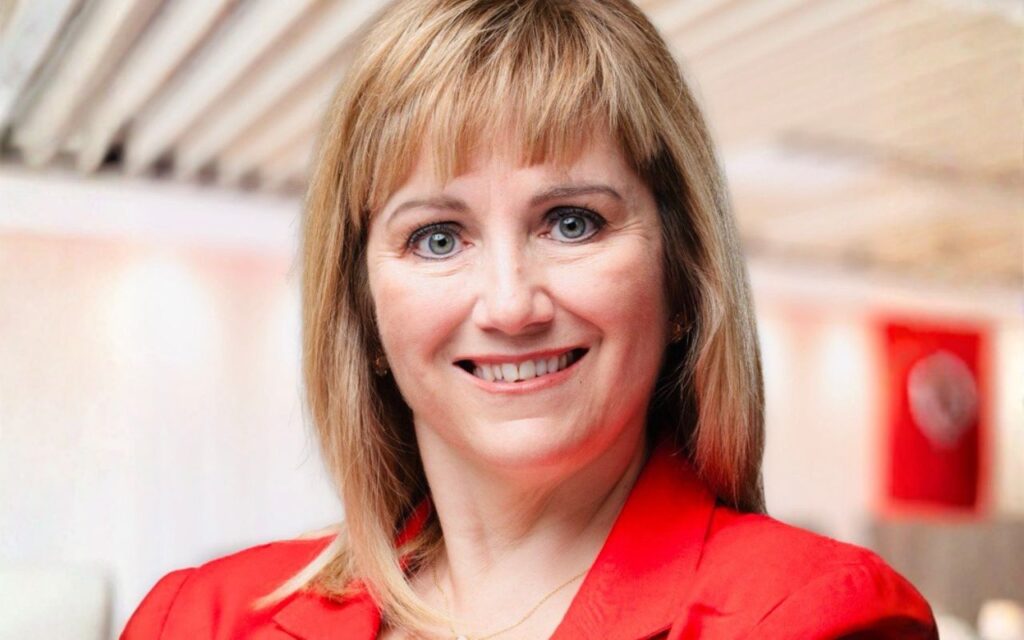
For entrepreneurs, growth is exciting, but it can also stretch your finances thin. Managing cash flow during periods of expansion is one of the biggest challenges business owners face, and getting it wrong can stall momentum just as things are taking off.
To better understand how to navigate growth without running into financial roadblocks, we sat down with Rebecca Pang, Regional Vice President, Commercial Financial Services at RBC. From early-stage startups to scaling businesses, she supports founders across British Columbia in navigating their financial success.

Here are some of her top takeaways on keeping cash flow healthy while scaling smart:
THT: What are some of the typical cash flow challenges you’re seeing entrepreneurs face when they’re thinking about scaling their business?
Rebecca Pang: When we talk about cash flow challenges, they can show up in several ways. Of course, if a business isn’t profitable, that’s an obvious issue. But what’s often overlooked is that even profitable businesses can run into cash flow problems. For example, maybe you had strong sales last year, but your clients aren’t paying on time. Or perhaps you’ve tied up too much money in inventory. These kinds of mismatches between money in and money out can create severe cash flow strain.
A lot of entrepreneurs, understandably, are also focused on top-line growth – revenue. That’s the right mindset when building a business. Unfortunately, cash flow is often treated as an afterthought. Entrepreneurs think, “If I just grow revenue and control costs, the cash will follow.” But it’s not that simple.
You need to actively manage your cash cycle. For example, if you’re scaling and investing heavily in inventory, what happens if it doesn’t sell? Or if market trends shift? Being smart about cash flow means planning for those possibilities, not just hoping sales will cover it.
THT: How can entrepreneurs be better at keeping cash flow more top of mind?
Rebecca Pang: I’d say the first step is surrounding yourself with people who understand cash flow and can keep a close eye on the financial health of the business. As many companies move through their growth stages, they often find they’ve outgrown the finance support they had during the startup phase.
It’s important to reassess as you grow. Early on, you might just need a bookkeeper, but as your operations expand, you may need someone more senior, like a financial controller, to provide oversight and deeper insight. Eventually, bringing in a CFO becomes essential. At that stage, you need someone who can go beyond journal entries and day-to-day transactions and think strategically about how to allocate resources to fuel growth while maintaining liquidity.
THT: You work with some great female founders! Are there challenges you specifically see women face when it comes to scaling?
Rebecca Pang: If there’s one notable difference, it may come down to how startups have historically been funded. For instance, you may have heard the U.S. statistics: in 2023, all-female founding teams received just two per cent of all venture capital dollars, while all-male teams received around 80 per cent. I haven’t seen equivalent Canadian data, but the gap is still significant, and it has real implications.
Because of that macro funding environment, many female entrepreneurs tend to bootstrap longer before seeking external capital. They may rely on personal savings, friends, and family funding, and wait until later stages to raise money or take on debt.
That’s not necessarily a bad thing – having a healthy balance of equity and debt is important. But it can also mean that women are more cautious when it comes to borrowing. From my conversations, I get the sense that many female founders are extremely responsible, sometimes even more so because they’re balancing business with family responsibilities. They’re mindful not to put their families at risk, and that can lead to hesitancy around taking on debt.
While systemic factors continue to influence access to capital, entrepreneurs can take proactive steps by building strategic investor relationships, amplifying their business narratives, and connecting with mentors who understand the funding landscape.
THT: Talk to us about debt. It can be a scary word, but can there be a benefit to it in business?
Rebecca Pang: You can absolutely use debt strategically to grow. Many entrepreneurs start by bootstrapping, which makes sense in the beginning. But over time, using debt wisely can actually strengthen your financial position, just like building a credit history as an individual. Banks want to see how you manage credit over time. If you wait until you need a $10 million loan and have no borrowing history, it’s a much harder conversation.
Lines of credit are designed to align with your working capital cycle. When your business is growing and you need extra cash to meet demand, you can draw from your line of credit, similar to a personal line of credit. Then, once payments come in from your customers, you can repay the balance. It’s a flexible, revolving solution that helps smooth out the ups and downs of your cash flow.
THT: What other tools do you recommend to entrepreneurs when they are looking to manage their cash flow while trying to scale their business?
Rebecca Pang: There are many solutions out there like accounting software, cash flow planners and dashboards that can be helpful. I would also suggest thinking about trade finance solutions – like letters of credit or guarantees – when you’re working with international vendors. Say you’re ordering supplies from a vendor overseas and don’t want to pay 100 per cent upfront before the goods even arrive in Canada. A letter of credit acts as a trusted intermediary: it assures the vendor they’ll be paid upon delivery and gives you peace of mind that you won’t release funds until the goods are received, without tying up all your cash in the meantime.
THT: Are there any examples that come to mind of clients you’ve worked with who have overcome those kinds of roadblocks using the strategies you’ve talked about?
Rebecca Pang: Yes, absolutely! One client I really admire manufactures linens and bed sheets for major hotel chains. Her success has been nearly 20 years in the making – from securing her first client to now supplying more than 100, including some of the biggest hotel chains in Canada.
We’ve worked with her over the years on cash flow management and business strategy. One major focus was diversifying her client base. Early on, she relied heavily on a large Canadian hotel chain, but when that company shifted policy and chose to work only with another vendor, her sales dropped significantly overnight. It was a tough lesson in the risks of over-concentration.
We also helped her diversify her supplier base and make smart use of financial tools like lines of credit and letters of credit to manage working capital and reduce cash flow strain.
She’s now in a great position and is reinvesting the money she’s generating back into the business to support the next stage of her company’s growth.
THT: Do you have a final key tip or piece of advice you’d like to share with other women entrepreneurs striving for success?
Rebecca Pang: Don’t wait until everything is perfect to take the next step. Success comes from progress, not perfection. Surround yourself with the right advisors, ask the tough questions and stay laser-focused on your long-term vision – even when the day-to-day gets messy.






